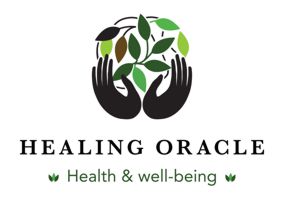You may, or may not know that the human body produces vitamin D as a response to sun exposure and that you can also get it through certain foods/supplements. But most of us are simply unware of the power and significance of this essential hormone.
Globally, an estimated 1 billion people are deficient in this essential nutrient called vitamin D, whilst a huge proportion of the world’s population is dangerously low in vitamin D. Vitamin D deficiency is most common in the elderly and obese, but with covid lock downs and continued indoor lifestyle it effects all of us and is on the increase.
The role of Vitamin D in our immune system is vastly underestimated. As it provides a vital role in our body’s self defence mechanism. If we are low in Vitamin D then we are likely to develop diseases of the immune system such as cancer.
Our immune system relies on a protein called GcMAF/VDTP. This fighter protein is constantly activated to fight cancer cells and other toxins in healthy people that have a ready supply of Vitamin D. GcMAF/VDTP transports Vitamin D to become activated against harmful cells. Without it our immune system is weakened, and we are left with a far lower self defence mechanism than when we live a healthier outdoor lifestyle with a nutrient rich diet.
Read more here about the role and effects of GcMAF/VDTP within our immune system.
What is Vitamin D?
Vitamin D is a fat-soluble compound that your skin converts into cholesterol, our blood vessels then use this as fuel for each and every cell in the body. This fat-soluble vitamin also plays a vital role in calcium homeostasis & bone metabolism. It also increases brain activity and as a hormone also helps with mood and anxiety.
Vitamin D deficiency may lead to osteomalacia and rickets in children and osteomalacia and other health related issues in adults.
Subclinical vitamin D deficiency is associated with osteoporosis and an increased risk of falls fractures. Many studies have established links between vitamin D deficiency and cancer, cardiovascular diseases, autoimmune disorders, and depression.
Reasons Behind Vitamin D deficiency:
Reduced sun exposure
The human body system can absorb 50%-90% of vitamin D through the skin via sunlight. Twenty minutes of sunshine with more than 40% of skin exposed is required to prevent vitamin D deficiency. Lesser exposure to the sun with lockdowns institutionalization, or prolonged hospitalizations may also lead to vitamin D deficiency.
Our indoor lifestyle and the stress of modern living has become a physical and mental burden to humanity. Our changes in lifestyle over the last 20-30 years has meant we are no longer outdoors, connecting to the vital life sources of the sun.
The sunscreen industry and poor education has led to an unhealthy fear of the sun. Whilst research also shows that it is sunscreen itself that can cause skin cancer.
It is during the time of sunset and sunrise that we get the highest levels of Vitamin D as the sun is in its full spectrum and is at its most giving. Traditionally we would wake and rest at the same time as the sun and so this was never a problem. Now, as we say, it is a huge problem, and we are mostly unaware of it.
Reduced dietary intake and/or absorption
Specific malabsorption syndromes such as celiac disease, chronic pancreatic insufficiency, short-bowel syndrome, inflammatory bowel disease, gastric bypass, and cystic fibrosis may also lead to vitamin D deficiency.
Reduced endogenous synthesis
People with chronic liver disease such as cirrhosis may also have a notable defective 25-hydroxylation, leading to vitamin D deficiency.
Increased hepatic catabolism
Medications such as carbamazepine, phenobarbital, dexamethasone, spironolactone, nifedipine, clotrimazole, and rifampin have been noticed to induce hepatic p450 enzymes, which lead to degradation of vitamin D.
Determining and Evaluating Vitamin D Deficiency:
Vitamin D deficiency can be evaluated by measuring serum 25-hydroxyvitamin D.
It is possible to test your levels of Vitamin D to see how deficient you are. It is a simple blood test called a 25 Hydroxy blood test. So google it to find your nearest lab that can do this test for you and make sure to share these results with a trained medical professional.
Substantial differences in mineral metabolism have been found amongst different races. For instance, African Americans have lower fracture risk and high bone density compared to other races.
The International Society for Clinical Densitometry & International Osteoporosis Foundation recommends minimum serum levels of 25-hydroxyvitamin D of 30 ng/mL to eliminate or minimize the risk of fall & fractures in older individuals.
For those diagnosed with a vitamin-D deficiency, it is crucial to check secondary hyperparathyroidism and levels of parathyroid hormone & serum calcium. Vitamin D3 (cholecalciferol) has proven efficacy in achieving optimal 25-hydroxyvitamin D levels.
Management of Vitamin D deficiency
The dosage of vitamin D required to treat the deficiency depends majorly on the degree of deficiency and the underlying risks.
- Initial supplementation for eight weeks with Vitamin D3 weekly can be considered. Once the serum 25-hydroxyvitamin D level exceeds 30 ng/mL, a daily maintenance dose of 1,000 to 2,000 IU is advised.
- A higher-dose supplementation with vitamin D3 at 10,000 IU daily may be needed in high-risk adults initially. Upon 25-hydroxyvitamin D level exceeding 30ng/mL, 3000 to 6000 IU/day maintenance dose is necessary.
- Children deficient in vitamin D need 2000 IU/day of vitamin D3 or 50,000 IU of vitamin D3 once weekly for six weeks. According to the American Academy of Pediatrics, breastfed infants and children consuming less than 1 L of vitamin D-fortified milk need 400 IU of vitamin D supplementation.
- Calcitriol is considered if the deficiency persists after treatment with vitamin D3. The serum calcium level must be closely monitored due to the increased risk of hypercalcemia.
- Calcidiol is a consideration for patients with fat malabsorption or severe liver disease.
Vitamin D and Cancer
A recent study investigated its functions at the cellular level up to epidemiological research. 1,25(OH)2D3 has been found to affect tumour growth, arrest the cell cycle progression, promote antiproliferative and proapoptotic pathways, and initiate mechanisms of DNA damage repair, angiogenesis, and metastasis.
The protective effect of vitamin D3 intake reduced the risk of high stage cancer of any type among adults.
Continuous research and ongoing trials found that daily doses of vitamin D supplements decreased total mortality rates. In the Women’s Health Initiative, calcium & vitamin D supplementation reduced the risk of natural cancer, breast cancer, and colorectal cancer.
With more and more data from randomized controlled trials (RTCs), in future, we can expect to get a better understanding of the impact of vitamin D in therapy, prevention, prognosis, risk of cancer, and follow-up outcomes in cancer survivors.
Conclusion
It is vital to have a daily dose of Vitamin D and so we advise you to get out into the sunshine and breath the fresh air of life. The more we can tune our bodies to the flow of the world the healthier we will be. We can protect ourselves if we pay more attention to the gifts of life.
Love and light
Love and Light
The Healing Oracle Team
Please join our growing numbers on MeWe: Healing Oracle
Also join us on Twitter | YouTube
Global Petition
Please sign our global petition against enforced vaccinations The intention of this petition is to present 5 million signatures to each President, Prime Minister, Health Minister and heads of state worldwide.
Vaccines are a global problem and need to be tackled on a global level.
If we stand as one, we have a chance of saving the children of the future.

